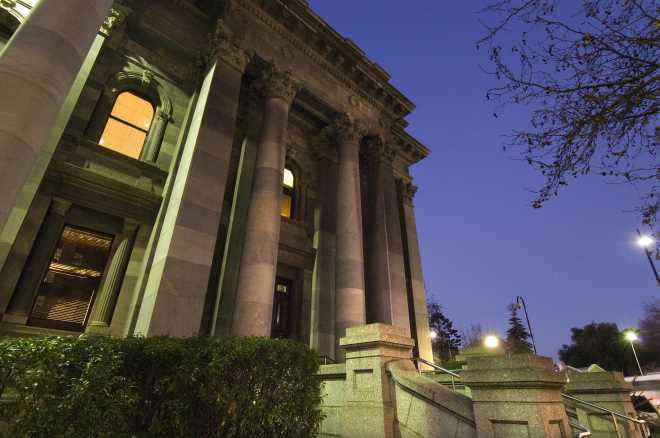
Drive With Care And Be Bus Aware
The State Government has released confronting vision highlighting the dangerous mistakes drivers make around buses, in a bid to encourage motorists to take greater care and avoid preventable collisions.
Onboard security vision shows motorists cutting in and colliding with buses, triggering accidents and close calls, putting drivers, passengers and other road users at risk.
The vision is being released as part of National Road Safety Week 2025 and highlights the daily challenges bus drivers face when motorists do not leave a safe distance between their vehicle and the bus or fail to give them right of way.
In one incident, a prescribed security officer is thrown forward in a bus when the driver is forced to brake suddenly to avoid a crash after being cut off by a motorist as they merge left into a bus lane on Grenfell Street.
Bigger buses in the fleet can carry up to 90 passengers and weigh more than 25 tonnes – four times as heavy as an elephant – and can take more than 25 metres to stop when travelling at 60 kilometres an hour.
By cutting in front of a bus, or moving in quickly from the side, a motorist minimises the space a bus has to safely stop or complete a turn, increasing the risk of a collision. Sitting in a bus driver’s blind spot can also pose a risk.
An average 205,250 people catch Adelaide Metro services each day, with more than 2.7 million bus services running each year.
To keep drivers and passengers safe, Adelaide Metro has a range of safety measures in place on some vehicles, including lane departure and blind spot detection, crash avoidance warning, and driver alerts when vulnerable road users such as pedestrians and cyclists are present. Electronic coaching tools are also used by some bus operators to track drivers’ on-road performance.
Motorists must give way to buses displaying the “Give Way to Buses” sign if the bus is indicating to move out from the kerb. This rule applies to the left lane on a multi-lane road, and if the left lane is a bike lane or obstructed, drivers in the next lane must also give way.
A bus lane is marked by signs and is set aside for the exclusive use of public buses, emergency vehicles, cyclists and taxi drivers during the times stated on the signs. If there are no times stated, it applies at all times.
Tips for motorists:
Download vision of the bus and car interactions here.
As put by Stephen Mullighan
A bus driver’s main job is to get passengers to their destination safely, but this is made incredibly hard when motorists drive dangerously.
More than 200,000 South Australians catch a bus every day. If a motorist fails to give way or cuts the bus off it puts everyone’s safety at serious risk.
Bus driving is a very involved role, but it is made more difficult by motorists making careless mistakes.
I urge South Australians, please take greater care around buses.
As put by Tenny Alex, Adelaide Metro bus driver
Driving a bus is a rewarding but demanding job that requires constant focus and awareness.
Sharing the road with all types of vehicles can be challenging at times, especially when cars change lanes or brake unexpectedly.
That’s why I’m always scanning ahead and trying to anticipate what’s happening around me.
Sometimes, smaller vehicles move into the space in front of us without realising we’ve left that gap for safety. It’s not just empty space — it’s part of how we keep everyone on board and on the road safe.
If you see a bus indicating to leave a stop, please give us the room we need. We’re all just trying to get where we need to go safely, and sometimes a little patience goes a long way.


